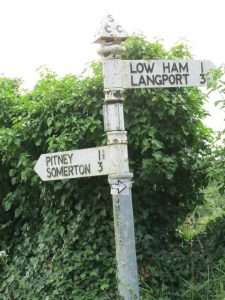According to the Financial Times, the people making the most fuss about the dangers of artificial intelligence are the people who are making the most fuss about artificial intelligence.
More hazardous than any threat posed by electronic software that plays chess well but writes dreadful song lyrics is the interaction of artificial and human intelligence.
I recall a visit to a Tesco supermarket.
Only after three circuits of the supermarket did I feel that I had to ask an assistnt for help.
‘Bovril? Can’t you find it? You mustn’t be looking in the right place’.
‘Well’, I said, ‘I tried with the drinks and I tried with the spreads and I tried with the gravy, and I can’t see it anywhere’.
‘Did you look with the drinks? Some people drink it, you know. Or what about with the Marmite?’
‘I tried with the drinks.’ I replied, ‘and I tried with the spreads.’
‘I’ll check the computer.’ The woman took a tablet from her pocket and typed in ‘Bovril’. A smile came across her face. ‘Aisle 7, Section 10, you were looking in the wrong place.;
She led me to shelves stocked with varieties of gravy.
‘I did look here’.
‘Well, the computer says it is here; if it’s not, then we don’t sell it.’
At the back of an adjacent shelf, I caught sight of the familiar red label. It was not where the computer said it was; did that mean it wasn’t there? I didn’t ask.
‘There it is’, said the woman, who turned and walked away.
It was not long after that I went to call at a hospital. I asked where I might find the person I wanted to visit
The receptionist spoke to me without raising her eyes from the monitor. ‘Fourth Floor, Room 10; take the lift and then turn left. Next please.’
Taking the stairs, I reached the fourth floor, short of breath, andturned left. Knocking at the door of Room 10, I explained who I was.
‘Sorry’, said a doctor who stood in the room, ‘but you have been sent to the wrong place’.
Wearily, I had returned to the ground floor and queued again for the reception.
‘I don’t understand’, said the receptionist, still not looking at me. ‘The computer says Room 10 on the Fourth Floor. Are you sure you went to the right room?’
There had been the temptation to ask, ‘Do you sell Bovril?’


